In this guest post, Associate Curator Bob Gwynne reveals some of the railways’ forgotten links to both coastal shipping and inland waterways.
Railway dominance of land transport up to the start of the Second World War is often taken for granted. However, this ignores railway links to inland waterways and coastal shipping. In fact, a great number of the ferry routes were developed by the railway companies and their subsidiaries. They also owned and operated inland waterways as commercial concerns throughout Britain.
Today there are few reminders of how the railway era was linked to shipping and the few canal boats in a railway livery always attract comment. It is also easy to forget that the most prominent survivor of the era of ocean-going leisure trips, paddle steamer Waverley, was built for the London and North Eastern Railway in 1946.
In 2016 another steam ship joined the ranks of these rare working survivors – the steam-powered tug ‘Daniel Adamson’. She was built in 1903 on the Wirral for the Shropshire Union Railway and Canal Company which the London and North Western Railway leased from 1847.

An early ‘integrated transport system’, the SURCC ran railways and the Shropshire Union Canal, linking the latter with Liverpool by tug boats adapted for towing canal boats and carrying passengers from the entrance to the narrow Shropshire Union Canal at Ellesmere Port, up the Mersey to Liverpool docks. As built, this venerable vessel was the ‘Ralph Brocklebank’ and no doubt kept busy at a time when the SURCC owned 450 narrow boats.
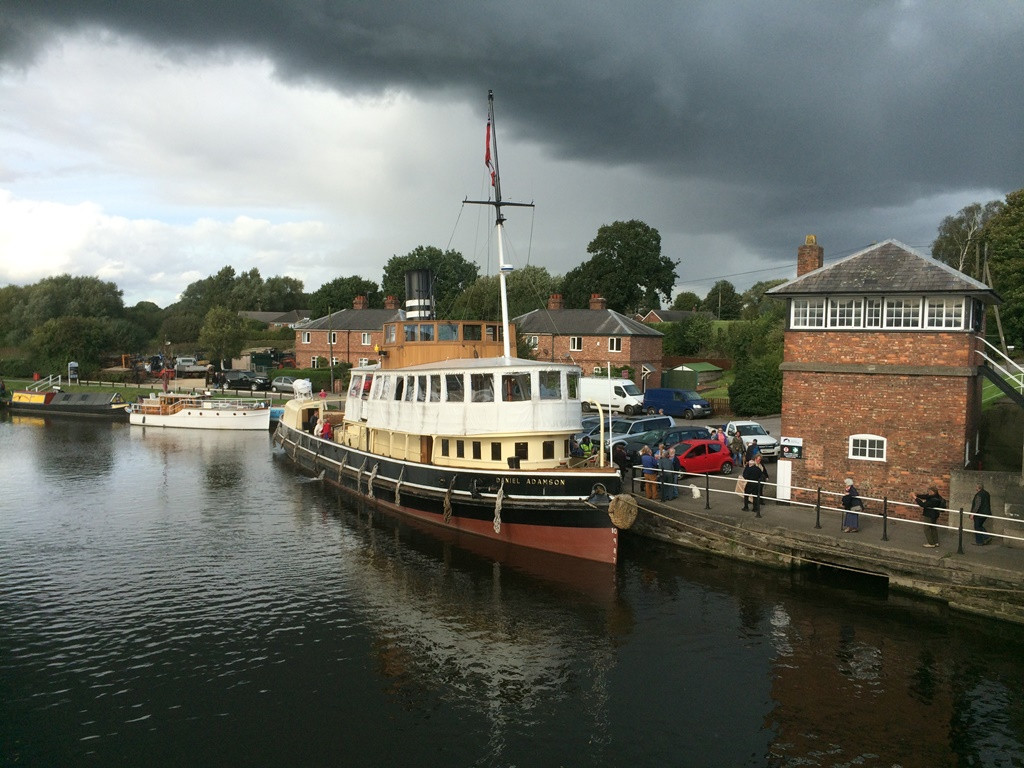
Road competition after the First World War, which was bad enough on the railways, saw traffic on the canals slump and the ‘Ralph Brocklebank’ was sold to the Manchester Ship Canal company in 1922. The Shropshire Union Canal would later be abandoned by the successor to the LNWR, the London Midland and Scottish railway in 1944. (That abandonment is linked to the start of the campaign to restore canals to navigation, as it was at that time that writer Tom Rolt was touring ‘the cut’ in his SUCC boat ‘Cressy’. His book ‘Narrow Boat’ is seen as fundamental to the start of the Inland Waterways Association. Rolt would later go on to be also instrumental in the development of railway preservation and industrial archaeology.)
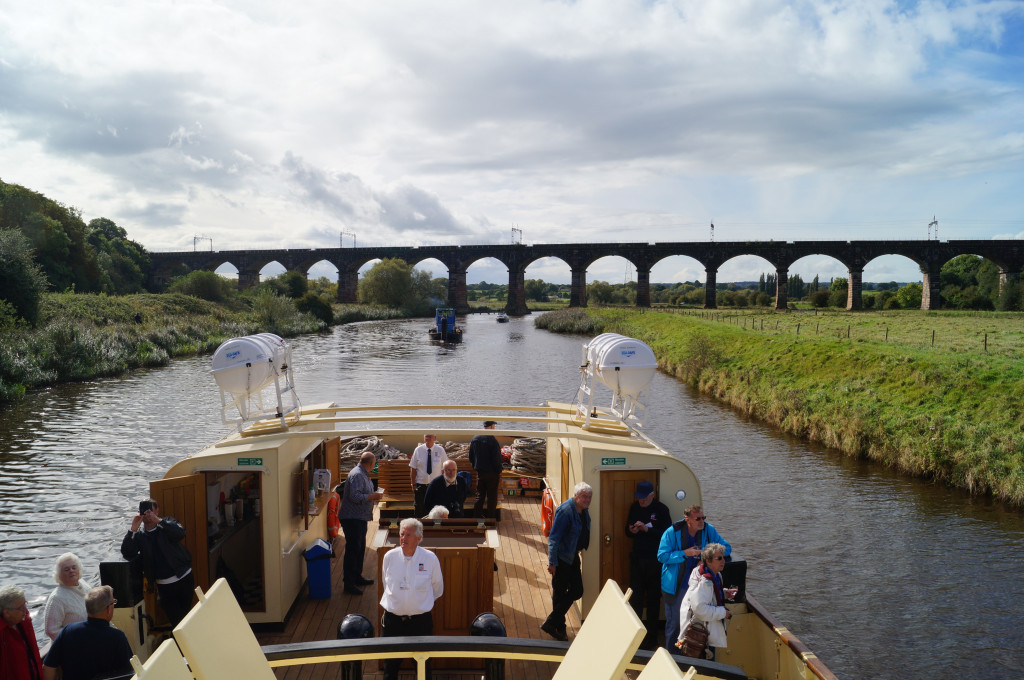
In 1936 the SURCC’s old tug had a name change to ‘Daniel Adamson’ after the founding father of the Manchester Ship Canal. Here again there are railway links because Daniel Adamson was born in 1820 in Shildon, County Durham, where his father ran a passenger service on the Stockton and Darlington Railway and owned the ‘Grey Horse’ pub (still open for business). Adamson’s career started when he was apprenticed to Timothy Hackworth, the engineer who had competed in the Rainhill Trials and who kept the trains moving on the S&D. Adamson’s apprenticeship obviously worked well because he went on to found a boiler manufacturing works in Manchester (which also completed a few locomotives), and the Frodingham Ironworks at Scunthorpe.
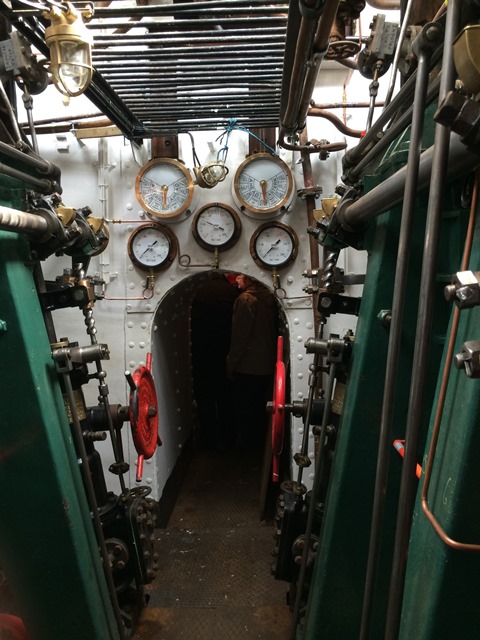
The 1936 name change was accompanied by the fitting out of the vessel as the official Manchester Ship Canal Director’s launch, complete with an interior produced by the same Liverpool furniture makers (a subsidiary of the Belfast shipbuilders Harland and Wolff) whose experience of fitting out grand ocean liners is shown to good effect on this (not so humble) tug, which boasts an Art Deco saloon.
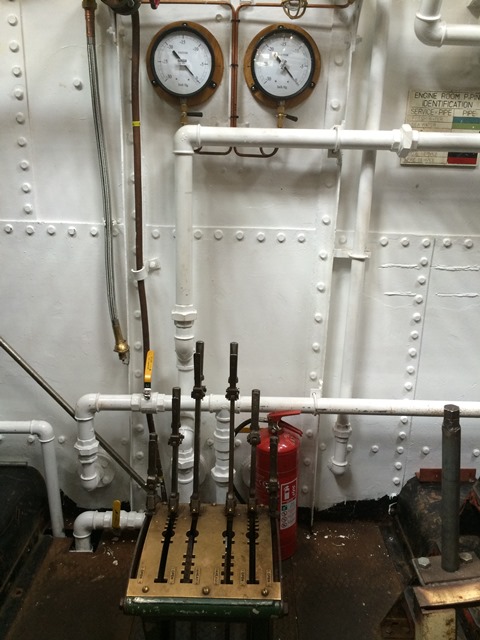
From 1936 ‘the Danny’ sailed on, entertaining the great and the good who might be useful to Britain’s largest ship canal. Down below, the power came from engines built by the Liverpool firm John Jones and Sons, a company with a long history going back to the start of the Liverpool and Manchester railway. (The Jones company had started out by building locomotives, including ‘Firefly’ for the Great Western Railway.) By 1903 John Jones and Sons were well known for building ship engines and boilers as well as powered dockside equipment and ships including Mersey Ferries.
In 1982 Manchester Docks closed and in late 1984 the ‘Daniel Adamson’ was withdrawn from service and sent to the Ellesmere Port boat museum. Based in a lower basin away from the main site, the ship suffered vandalism to the point where plans were made to scrap the vessel, despite its age and history.
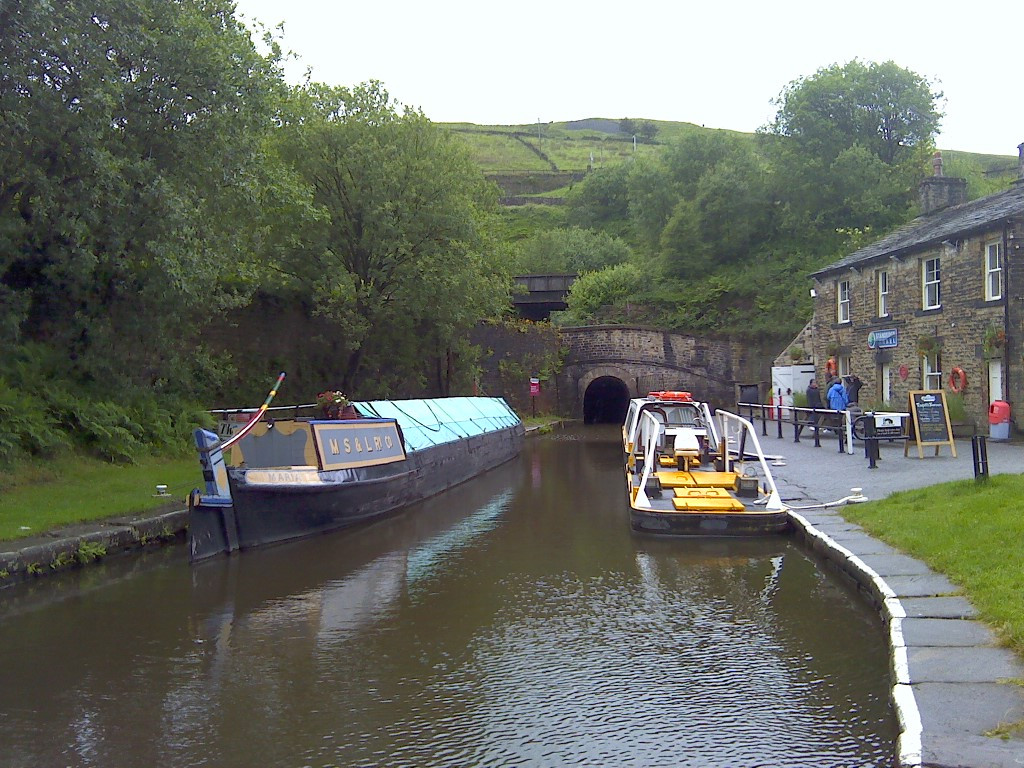
At this point Dan Cross, a Liverpool tugboat skipper, formed the Daniel Adamson Preservation Society with the help of Tony Hirst, the former head of the canal museum at Ellesmere Port. After a great deal of hard work, fundraising and a large grant from the Heritage Lottery Fund, the vessel was finally put back into steam and given a passenger carrying certificate this year. In the run up to its first public sailing, the Llangollen Railway provided some training for the Danny’s volunteers who were going to get busy stoking the boilers.
Finally, on 30 September 2016 after a great deal of money and effort, ‘the Danny’ set sail on its first public cruise. Those on board enjoyed an entertaining journey up the Manchester Ship Canal and then up the Weaver Navigation (also a broad canal) to Acton Bridge. It was fitting that when the ship steamed under Dutton Viaduct (built in 1836) a passenger train shot over the top of it. Anyone who captured the scene, inadvertently captured an image that symbolises the long association between railways and water borne craft.
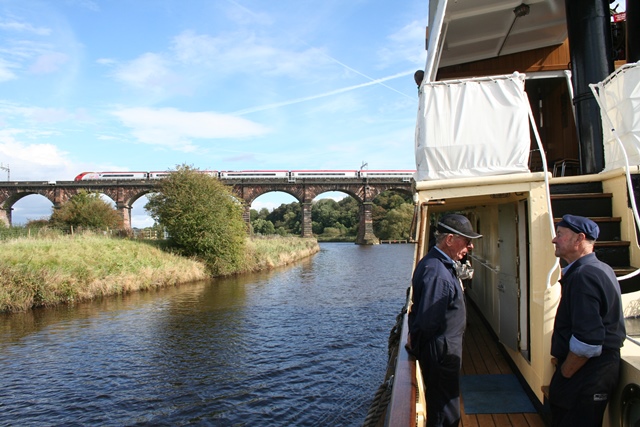
2017 marks the first full ‘cruising season’ for The ‘Daniel Adamson’, a living reminder that railway history is always full of surprising links, and that transport integration is nothing new.
Brilliant narrative Bob.